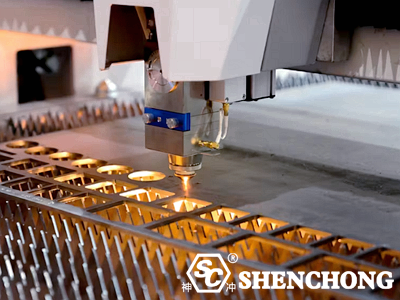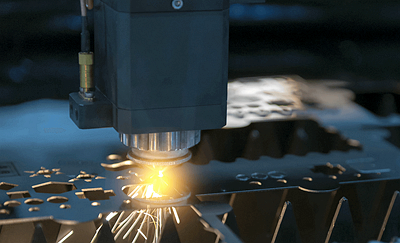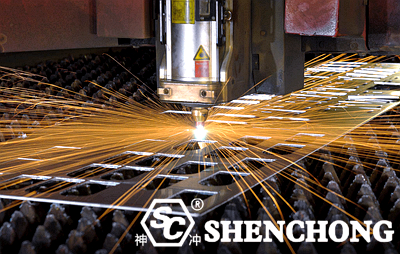
Laser cutting repeat positioning accuracy is an important indicator to measure its automated processing capabilities and processing quality stability, and directly determines the dimensional accuracy and contour quality of the processed parts. In the fields of precision sheet metal processing and microelectronic device manufacturing, the repeatability of cutting must reach ±0.01mm or even higher standards. Improving its repeatability can significantly improve cutting quality, reduce rework rate, and meet the needs of high-precision manufacturing.
The following is a solution and technical analysis of improving the repeatability of laser cutting machines.

Repeatability accuracy refers to the error range of the laser cutting head when it returns to a specific position multiple times. It reflects the stability and reliability of the motion system and is one of the core indicators in precision machining.

Manufacturing accuracy of mechanical parts such as slide rails, screws, gears, etc.
Assembly error and transmission clearance of moving parts.
The rigidity and shock absorption capacity of the base.
Response accuracy and resolution of servo motor.
Accuracy and stability of encoder.
Software algorithm of control system (such as error compensation).
Thermal expansion caused by temperature changes.
Vibration interference (from the outside or the machine tool body).
Contaminants such as dust and oil affect the movement of components.

- Use high-precision ball screws or linear motors.
- Equipped with high-rigidity, low-friction linear guides.
- Optimize the assembly process and use a three-coordinate measuring machine for accuracy inspection.
- Symmetrical structural design to reduce the impact of thermal deformation.
In the motion mechanism of machine tools, the lead error of the ball screw is the main factor affecting the positioning accuracy. The use of C3-level high-precision ball screws can reduce the single-axis positioning error to within 5μm/m, and the pre-stretching installation process can effectively eliminate the thermal deformation caused by temperature rise. The verticality error of the cross roller guide rail needs to be controlled within the range of 0.005mm/300mm, and the use of a three-point support structure can significantly improve the load uniformity of the guide rail.
The reverse clearance of the transmission system is the key factor causing the repeat positioning error. Through the double nut preload structure with a 0.001mm preload adjustment device, the reverse clearance can be controlled within ±0.003mm. The direct assembly of the servo motor and the lead screw needs to be calibrated using a laser alignment instrument to ensure that the coaxiality error is less than 0.005mm. In high-speed shaft systems, the use of carbon fiber couplings can reduce the moment of inertia by 30% and improve dynamic response characteristics.
The selection of precision linear guides needs to focus on load distribution and vibration characteristics. Use finite element analysis software to perform modal analysis on the guide support structure, optimize the rib layout to increase the first-order natural frequency to above 200Hz. Manually scrape the guide mounting surface to ensure that the contact spot density reaches 12 points/25×25mm², and tighten the bolts in stages with a torque wrench to effectively control installation stress deformation.
- The servo drive system replaces the stepper motor to improve laser cutting positioning accuracy and dynamic response.
- Equipped with a high-resolution absolute encoder to reduce the error of returning to the origin.
- Apply error compensation algorithms (such as reverse clearance compensation and thermal drift compensation).
Optimizing the control parameters of the servo drive system is the core link to improve positioning accuracy. The self-tuning algorithm is used to dynamically adjust the position loop gain and speed feedforward coefficient, and the following error can be controlled within ±0.005mm at a feed speed of 500mm/s. The high-resolution encoder is upgraded to a 23-bit absolute value type, and the position detection resolution reaches 0.001μm level with the subdivision circuit.
The temperature compensation system needs to arrange a PT100 temperature sensor array at the key position of the machine tool to build a thermal error compensation model. The guide rail temperature-deformation curve is fitted by the least squares method, and the compensation parameter matrix is established, which can reduce the thermal deformation error by 70%. Water cooling jackets are installed at both ends of the screw, and the temperature rise of the screw is stabilized within the range of ±0.5℃ with the PID temperature control system.
In terms of vibration suppression, a notch filter is implanted at the servo drive end, and the center frequency is set to 1.2 times the mechanical resonance frequency, which can effectively attenuate the resonance peak. The S-shaped acceleration and deceleration planning is adopted for the motion curve, which can reduce the mechanical shock vibration by more than 30% under the condition that the acceleration change rate does not exceed 15m/s³. An active air floating vibration isolation device is installed on the base of the equipment to reduce the environmental vibration transmission rate to less than 10%.
- Use full closed-loop control (high-precision encoder feedback between the motor and the load).
- Avoid positioning errors caused by transmission clearance and elastic deformation.
- Install a constant temperature system to control temperature fluctuations in the machine tool working environment.
- Use low thermal expansion coefficient materials (such as granite, composite materials) for key components (such as bed and guide rails).
- Implement thermal drift monitoring and compensation algorithms.
- Install precision calibration equipment such as laser interferometers and ballbars.
- Periodically perform automatic calibration of the equipment and update error compensation data.
- Introduce machine learning algorithms for dynamic error analysis and prediction.
The improvement of laser cutting repeat positioning accuracy is a systematic project, involving many aspects such as mechanical structure, control system, measurement feedback and environmental control. With the development of intelligent manufacturing and digital control technology, high-precision and stable laser cutting equipment will become an important support for the high-quality development of the manufacturing industry.